Strength Parameters of Foamed Geopolymer Reinforced with GFRP Mesh
Abstract
:1. Introduction
2. Experimental Program
2.1. Materials and Methods
2.2. Testing
3. Experimental Results and Analysis
3.1. Mechanical Properties of Foamed Geopolymers
3.2. Efficiency of Mesh Reinforcement
3.3. Analytical Model
- —fiber breaking force,
- mm (the span of beam),
- , —strains of the composite fiber and the outmost geopolymer fiber, respectively,
- , —elasticity moduli for the composite fiber and concrete [MPa], respectively.
- —thickness of composite (mm),
- —compressive strength of foamed geopolymer (MPa).
4. Conclusions
- (1)
- The origin of fly ash is of great importance for the mechanical properties of the geopolymer concrete. The compressive strengths of geopolymers based on anthracite coal fly ash are at least 73% higher than those based on lignite coal, which is rich in calcium. Similar differences were obtained in tests of the tensile strength and the modulus of elasticity. The worst mechanical properties were shown by geopolymer made from ashes from the Belchatow power plant.
- (2)
- The deficiencies in the tensile strength can be effectively improved by reinforcement of the composite mesh. The effectiveness of this reinforcement depends on its location and the density of the foamed geopolymer. For lower densities, insufficient compressive strength leads to premature failure, which may be caused by the brittle breaking of the glass fibers or delamination.
- (3)
- Of the beams reinforced along the bottom surface, failure due to debonding was most commonly observed. Only the samples made of fly ashes from Jaworzno and Turow and foamed with 1% H2O2 content were all broken due to mesh rupture. The proposed load capacity prediction model, which was based on existing debonding formulas originally developed for plain concrete, significantly overestimated the bond capacity.
- (4)
- The effect of the chemical integrity of the fiberglass (Si content) [49] on improving the bond to the geopolymer was lower than expected. The suitability of glass fibers for geopolymer reinforcement, as reported by other researchers [49,50,51], was not confirmed. Chemical decomposition of the glass fibers was observed during testing, especially in the case of geopolymers based on type-C fly ashes. An increase in the brittleness of the fibers in samples inspected after testing was particularly noticeable.
- (5)
- The proposed empirical model allows for a more precise determination of the load capacity. It takes into account the lower bond of the mesh composite to the foamed geopolymer and the aging effect of the glass fibers during the geopolymerization reaction.
Author Contributions
Funding
Institutional Review Board Statement
Informed Consent Statement
Data Availability Statement
Conflicts of Interest
References
- Shigemoto, N.; Hayashi, H.; Miyaura, K. Selective formation of Na-X zeolite from coal fly ash by fusion with sodium hydroxide prior to hydrothermal reaction. J. Mater. Sci. 1993, 28, 4781–4786. [Google Scholar] [CrossRef]
- Inada, M.; Yukari, E.; Enomoto, N.; Hojo, J. Synthesis of zeolite from coal fly ashes with different silica-alumina composition. Fuel 2004, 84, 299–304. [Google Scholar] [CrossRef]
- Tanaka, H.; Eguchi, H.; Fujimoto, S.; Hino, R. Two-step process for synthesis of a single phase Na–A zeolite from coal fly ash by dialysis. Fuel 2006, 85, 1329–1334. [Google Scholar] [CrossRef]
- Rangan, B.V. Fly Ash-Based Geopolymer Concrete. In Proceedings of the International Workshop on Geopolymer Cement and Concrete, Mumbai, India, 7 December 2010; Allied Publishers Private Limited: Mumbai, India, 2010; pp. 68–106. [Google Scholar]
- Kong, D.L.; Sanjayan, J.G.; Sagoe-Crentsil, K. Comparative performance of geopolymers made with metakaolin and fly ash after exposure to elevated temperatures. Cem. Concr. Res. 2007, 37, 1583–1589. [Google Scholar] [CrossRef]
- Hung, T.V.; Dong, V.D.; Long, N.N.; Hien, T.D. Study on the Mechanical Properties of the Fly Ash Geopolymer Concrete. Int. J. Civ. Eng. Technol. 2017, 8, 950–957. [Google Scholar]
- Naghizadeh, A.; Ekolu, S.O. Behaviour of fly ash geopolymer binders under exposure to alkaline media. Asian J. Civ. Eng. 2019, 20, 785–798. [Google Scholar] [CrossRef]
- Bakharev, T. Resistance of geopolymer materials to acid attack. Cem. Concr. Res. 2005, 35, 658–670. [Google Scholar] [CrossRef]
- Sarker, P.K.; Kelly, S.; Yao, Z. Effect of fire exposure on cracking, spalling and residual strength of fly ash geopolymer concrete. Mater. Des. 2014, 63, 584–592. [Google Scholar] [CrossRef]
- Ridtirud, C.; Chindaprasirt, P.; Pimraksa, K. Factors affecting the shrinkage of fly ash geopolymers. Int. J. Miner. Metall. Mater. 2011, 18, 100–104. [Google Scholar] [CrossRef]
- Yip, C.K.; van Deventer, J.S.J. Microanalysis of calcium silicate hydrate gel formed within a geopolymer binder. J. Mater. Sci. 2003, 38, 3851–3860. [Google Scholar] [CrossRef]
- Wang, S.D.; Scrivener, K.L.; Pratt, P.L. Factors affecting the strength of alkali activated slag. Cem. Concr. Res. 1994, 24, 1033–1043. [Google Scholar] [CrossRef]
- Luz Granizo, M.; Alonso, S.; Blanco-Varela, M.T.; Palomo, A. Alkaline activation of metakaolin: Effect of calcium hydroxide in the products of reaction. J. Am. Ceram. Soc. 2002, 85, 225–231. [Google Scholar] [CrossRef]
- Sciubidło, A.; Majchrzak-Kuceba, I.; Nowak, W. Influence of the chemical composition of the fly ashes on the efficiency of the synthesis zeolites Na-X. In Polska Inżynieria Środowiska Pięć Lat po Wstąpieniu do Unii Europejskiej; Ozonek, J., Pawłowski, A., Eds.; Komitet Inżynierii Środowiska PAN: Lublin, Poland, 2009; Volume 59, pp. 225–237. [Google Scholar]
- Dawczyński, S.; Kajzer, A.; Górski, M. Investigation on strength development in geopolymer made of power plant fly ash suspension. In Proceedings of the RILEM Proceedings PRO 121 SynerCrete’18—Interdisciplinary Approaches for Cement-Based Materials and Structural Concrete: Synergizing Expertise and Bridging Scales of Space and Time, Funchal, Portugal, 24–26 October 2018. [Google Scholar]
- Diaz, E.I.; Allouche, E.N.; Eklund, S. Factors affecting the suitability of fly ash as source material for geopolymers. Fuel 2010, 89, 992–996. [Google Scholar] [CrossRef]
- Guo, X.L.; Shi, H.S.; Dick, W.A. Compressive strength and microstructural characteristics of class C fly ash geopolymer. Cem. Concr. Compos. 2010, 32, 142–147. [Google Scholar] [CrossRef]
- Wardhono, A. Comparison Study of Class F and Class C Fly Ashes as Cement Replacement Material on Strength Development of Non-Cement Mortar. IOP Conf. Ser. Mater. Sci. Eng. 2018, 288, 012019. [Google Scholar] [CrossRef]
- Gunasekara, C.; Dirgantara, R.; Law, D.W.; Setunge, S. Effect of Curing Conditions on Microstructure and Pore-Structure of Brown Coal Fly Ash Geopolymers. Appl. Sci. 2019, 9, 3138. [Google Scholar] [CrossRef] [Green Version]
- Dawczyński, S.; Soczyński, M.; Górski, M. Feasibility and strength properties of the geopolymeric binder made of fly ash suspension. MATEC Web Conf. 2019, 262, 06001. [Google Scholar] [CrossRef]
- Henon, J.; Alzina, A.; Absi, J.; Smith, D.S.; Rossignol, S. Potassium geopolymer foams made with silica fume pore forming agent for thermal insulation. J. Porous Mater. 2012, 20, 37–46. [Google Scholar] [CrossRef]
- Sanjayan, J.G.; Nazari, A.; Chen, L.; Nguyen, G.H. Physical and mechanical properties of lightweight aerated geopolymer. Constr. Build. Mater. 2015, 79, 236–244. [Google Scholar] [CrossRef]
- Abdollahnejad, Z.; Pacheco-Torgal, F.; Felix, T.; Tahri, W.; Barroso Aguiar, J. Mix design, properties and cost analysis of fly ash-based geopolymer foam. Constr. Build. Mater. 2015, 80, 18–30. [Google Scholar] [CrossRef] [Green Version]
- Cui, Y.; Wang, D. Effects of Water on Pore Structure and Thermal Conductivity of Fly Ash-Based Foam Geopolymers. Adv. Mater. Sci. Eng. 2019. [Google Scholar] [CrossRef] [Green Version]
- Łach, M.; Mierzwiński, D.; Korniejenko, K.; Mikuła, J. Geopolymer foam as a passive fire protection. MATEC Web Conf. 2018, 247, 00031. [Google Scholar] [CrossRef] [Green Version]
- Cheng-Yong, H.; Yun-Ming, L.; Al Bakri Abdullah, M.M.; Hussin, K. Thermal Resistance Variations of Fly Ash Geopolymers: Foaming Responses. Sci. Rep. 2017, 7, 45355. [Google Scholar] [CrossRef] [PubMed]
- Skvara, F.; Sulc, R.; Tisler, Z.; Skricík, P.; Smilauer, V.; Zlamalova Cílova, Z. Preparation and properties of fly ash-based geopolymer foams. Ceram. Silik. 2014, 58, 188–197. [Google Scholar]
- Lahoti, M.; Tan, K.H.; Yang, E. A critical review of geopolymer properties for structural fire-resistance applications. Constr. Build. Mater. 2019, 221, 514–526. [Google Scholar] [CrossRef]
- Masi, G.; Rickard, W.; Vickers, L.; Bignozzi, M.; Van Riessen, A. A comparison between different foaming methods for the synthesis of light weight geopolymers. Ceram. Int. 2014, 40, 13891–13902. [Google Scholar] [CrossRef] [Green Version]
- Zhang, Z.; Wang, H. The Pore Characteristics of Geopolymer Foam Concrete and Their Impact on the Compressive Strength and Modulus. Front. Mater. 2016, 3. [Google Scholar] [CrossRef] [Green Version]
- Kim, H.; Lee, S.; Han, Y.; Park, J. Control of pore size in ceramic foams: Influence of surfactant concentration. Mater. Chem. Phys. 2009, 113, 441–444. [Google Scholar] [CrossRef]
- Huiskes, D.M.A.; Keulen, A.; Yu, Q.L.; Brouwers, H.J.H. Design and performance evaluation of ultra-lightweight geopolymer concrete. Mater. Des. 2016, 89, 516–526. [Google Scholar] [CrossRef]
- Boke, N.; Birch, G.D.; Nyale, S.M.; Petrik, L.F. New synthesis method for the production of coal fly ash-based foamed geopolymers. Constr. Build. Mater. 2015, 75, 189–199. [Google Scholar] [CrossRef]
- Anggarini, U.; Pratapa, S.; Purnomo, V.; Sukmana, N.C. A comparative study of the utilization of synthetic foaming agent and aluminum powder as poreforming agents in lightweight geopolymer synthesis. Open Chem. 2019, 17, 629–638. [Google Scholar] [CrossRef]
- Le, V.S.; Hájková, P.; Kovacic, V.; Bakalova, T.; Voleský, L.; Le, C.H.; Cecoon Seifert, K.; Pereira Peres, A.; Louda, P. Thermal Conductivity of Reinforced Geopolymer Foams. Ceram. Silikáty 2019, 63, 365–373. [Google Scholar] [CrossRef]
- Galzerano, B.; Formisano, A.; Durante, M.; Iucolano, F.; Caputo, D.; Liguori, B. Hemp reinforcement in lightweight geopolymers. J. Compos. Mater. 2018, 52, 2313–2320. [Google Scholar] [CrossRef]
- Ngo, J.P.; Promentilla, M.A. Development of Fiber-reinforced Foamed Fly Ash Geopolymer. MATEC Web Conf. 2018, 156, 05018. [Google Scholar]
- Masi, G.; Rickard, W.; Bignozzi, M.; Van Riessen, A. The influence of short fibres and foaming agents on the physical and thermal behaviour of geopolymer composites. Adv. Sci. Technol. 2014, 92, 56–61. [Google Scholar] [CrossRef]
- Abdollahnejad, Z.; Zhang, Z.; Wang, H.; Mastali, M. Comparative Study on the Drying Shrinkage and Mechanical Properties of Geopolymer Foam Concrete Incorporating Different Dosages of Fiber, Sand and Foam Agents. In High Tech Concrete: Where Technology and Engineering Meet, Proceedings of the 2017 Fib Symposium, Maastricht, The Netherlands, 12–14 June 2017; Hordijk, D., Luković, M., Eds.; Springer: Cham, Switzerland, 2018. [Google Scholar]
- Natali, A.; Manzi, S.; Bignozzia, M.C. Novel fiber-reinforced composite materials based on sustainable geopolymer matrix. Procedia Eng. 2011, 21, 1124–1131. [Google Scholar] [CrossRef] [Green Version]
- Masi, G.; Rickard, W.; Bignozzi, M.; Van Riessen, A. The effect of organic and inorganic fibres on the mechanical and thermal properties of aluminate activated geopolymers. Compos. Part B 2015, 76, 218–228. [Google Scholar] [CrossRef]
- Lee, J.H.; Wattanasiriwech, S.; Wattanasiriwech, D. Preparation of Carbon Fiber Reinforced Metakaolin Based-Geopolymer Foams. Key Eng. Mater. 2018, 766, 19–27. [Google Scholar] [CrossRef]
- De Villers, J.P.; van Zijl, G.; van Royen, A.S. Bond of deformed steel reinforcement in lightweight foamed concrete. Struct. Concr. 2017, 18, 496–506. [Google Scholar] [CrossRef]
- Falliano, D.; De Domenico, D.; Ricciardi, G.; Gugliandolo, E. Improving the flexural capacity of extrudable foamed concrete with glass-fiber bi-directional grid reinforcement: An experimental study. Compos. Struct. 2019, 209, 45–59. [Google Scholar] [CrossRef]
- Liu, J.; Wua, C.; Li, C.; Dong, W.; Sua, Y.; Li, J.; Cui, N.; Zeng, F.; Dai, L.; Meng, Q.; et al. Blast testing of high performance geopolymer composite walls reinforced with steel wire mesh and aluminium foam. Constr. Build. Mater. 2019, 197, 533–547. [Google Scholar] [CrossRef]
- Hulimka, J.; Krzywoń, R.; Jędrzejewska, A. Laboratory Tests of Foam Concrete Slabs Reinforced with Composite Grid. Procedia Eng. 2017, 193, 337–344. [Google Scholar] [CrossRef]
- European Committee for Standardization. EN 196-1: 2016. Methods of Testing Cement—Part 1: Determination of Strength; CEN-CENELEC Management Centre: Brussels, Belgium, 2016. [Google Scholar]
- Pacheco-Torgal, F.; Melchers, R.; de Belie, N.; Shi, X.; Van Tittelboom, K.; Saez Perez, A. Eco-Efficient Repair and Rehabilitation of Concrete Infrastructures; Woodhead Publishing: Cambridge, UK, 2017. [Google Scholar]
- Steinerova, M.; Matulova, L.; Vermach, P.; Kotas, J. The Brittleness and Chemical Stability of Optimized Geopolymer Composites. Materials 2017, 10, 396. [Google Scholar] [CrossRef] [PubMed] [Green Version]
- Nematollahi, B.; Sanjayan, J.; Chai, J.X.H.; Lu, T.M. Properties of Fresh and Hardened Glass Fiber Reinforced Fly Ash Based Geopolymer Concrete. Key Eng. Mater. 2014, 594–595, 629–633. [Google Scholar] [CrossRef]
- Alekhya, A.; Mahesh, Y. Experimental Investigations on Properties of Glass Fiber Reinforced Geopolymer Concrete Composites. IOSR J. Mech. Civ. Eng. 2017, 14, 1–10. [Google Scholar]
- European Committee for Standardization. EN 1097-6: 2013. Tests for Mechanical and Physical Properties of Aggregates. Determination of Particle Density and Water Absorption; CEN-CENELEC Management Centre: Brussels, Belgium, 2013. [Google Scholar]
- Ducman, V.; Korat, L. Characterization of geopolymer fly-ash based foams obtained with the addition of Al powder or H2O2 as foaming agents. Mater. Charact. 2016, 113, 207–213. [Google Scholar] [CrossRef]
- Davidovits, J. Geopolymer: Chemistry and Applications; Geopolymer Institute: Saint-Quentin, France, 2008. [Google Scholar]
- Kozłowski, M.; Kadela, M. Mechanical Characterization of Lightweight Foamed Concrete. Adv. Mater. Sci. Eng. 2018. [Google Scholar] [CrossRef] [Green Version]
- Drusa, M.; Vlcek, J.; Scherfel, W.; Sedlar, B. Testing of Foam Concrete for Definition of Layer Interacting with Subsoil in Geotechnical Applications. Int. J. Geomate 2019, 17, 115–120. [Google Scholar] [CrossRef]
- Koenig, A.; Mahmoud, H.; Baehre, O.; Dehn, F. Alkalinity and Its Consequences for the Performance of Steel-Reinforced Geopolymer Materials. Molecules 2020, 25, 2359. [Google Scholar] [CrossRef]
- Coricciati, A.; Corvaglia, P.; Mosheyev, G. Durability of Fibers in Aggressive Alkaline Environment. In Proceedings of the ICCM-17—17th International Conference on Composite Materials, Edinburgh, UK, 27–31 July 2009. [Google Scholar]
- Amaro, A.M.; Reis, P.N.B.; Neto, M.A.; Louro, C. Effects of Alkaline and Acid Solutions on Glass/Epoxy Composites. Polym. Degrad. Stab. 2013, 98, 853–862. [Google Scholar] [CrossRef]
- FIB Bulletin 90. Externally Applied FRP Reinforcement for Concrete Structures; Fédération Internationale du Béton (FIB): Lausanne, Switzerland, 2019; p. 229. [Google Scholar]
- Chen, J.F.; Teng, J.G. Anchorage strength models for FRP and steel plates bonded to concrete. J. Struct. Eng. 2001, 127, 784–791. [Google Scholar] [CrossRef]
- Krzywon, R. Assessment of existing bond models for externally 3 bonded SRP composites. Appl. Sci. 2020, 10, 8593. [Google Scholar] [CrossRef]
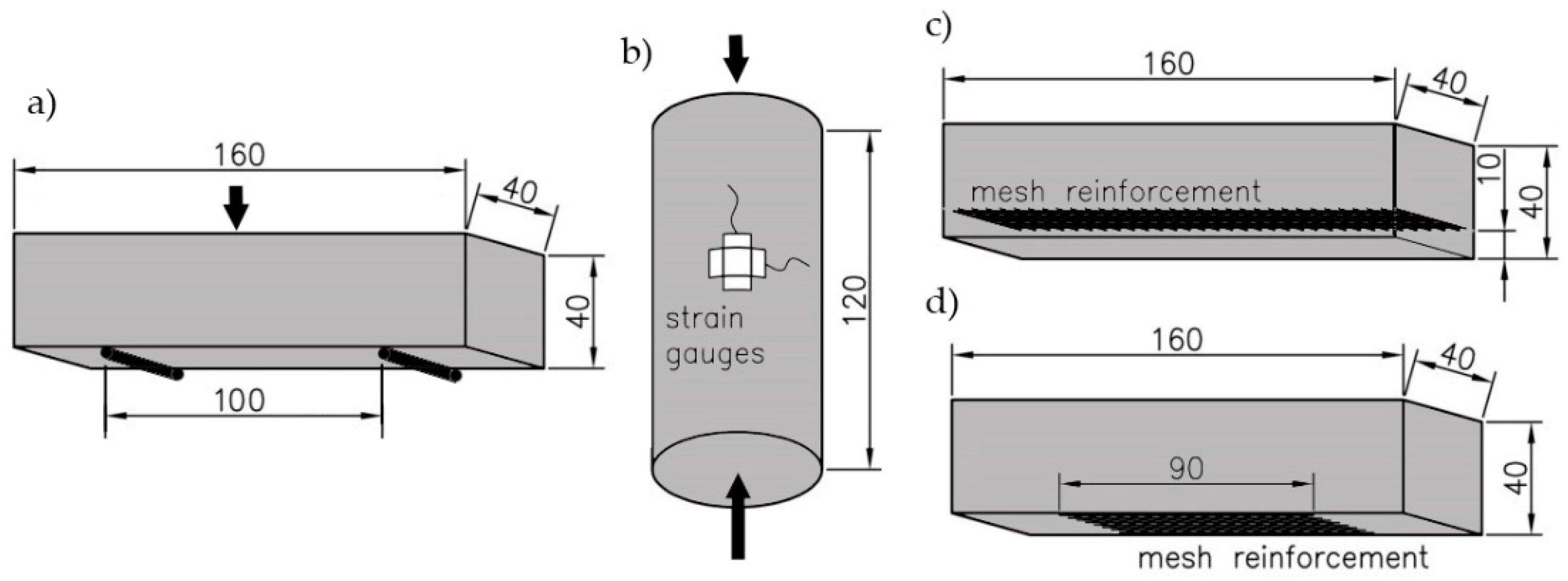
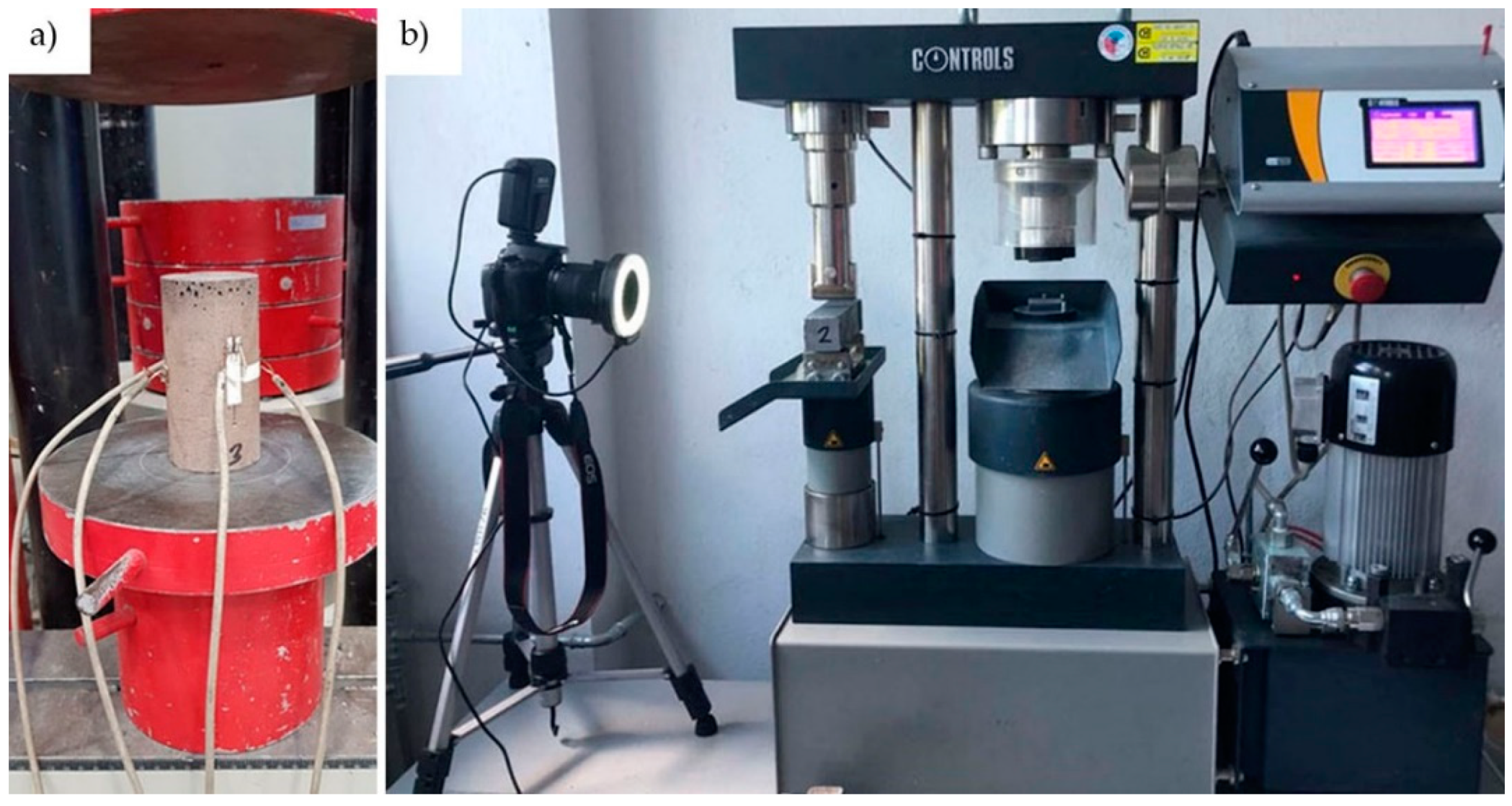

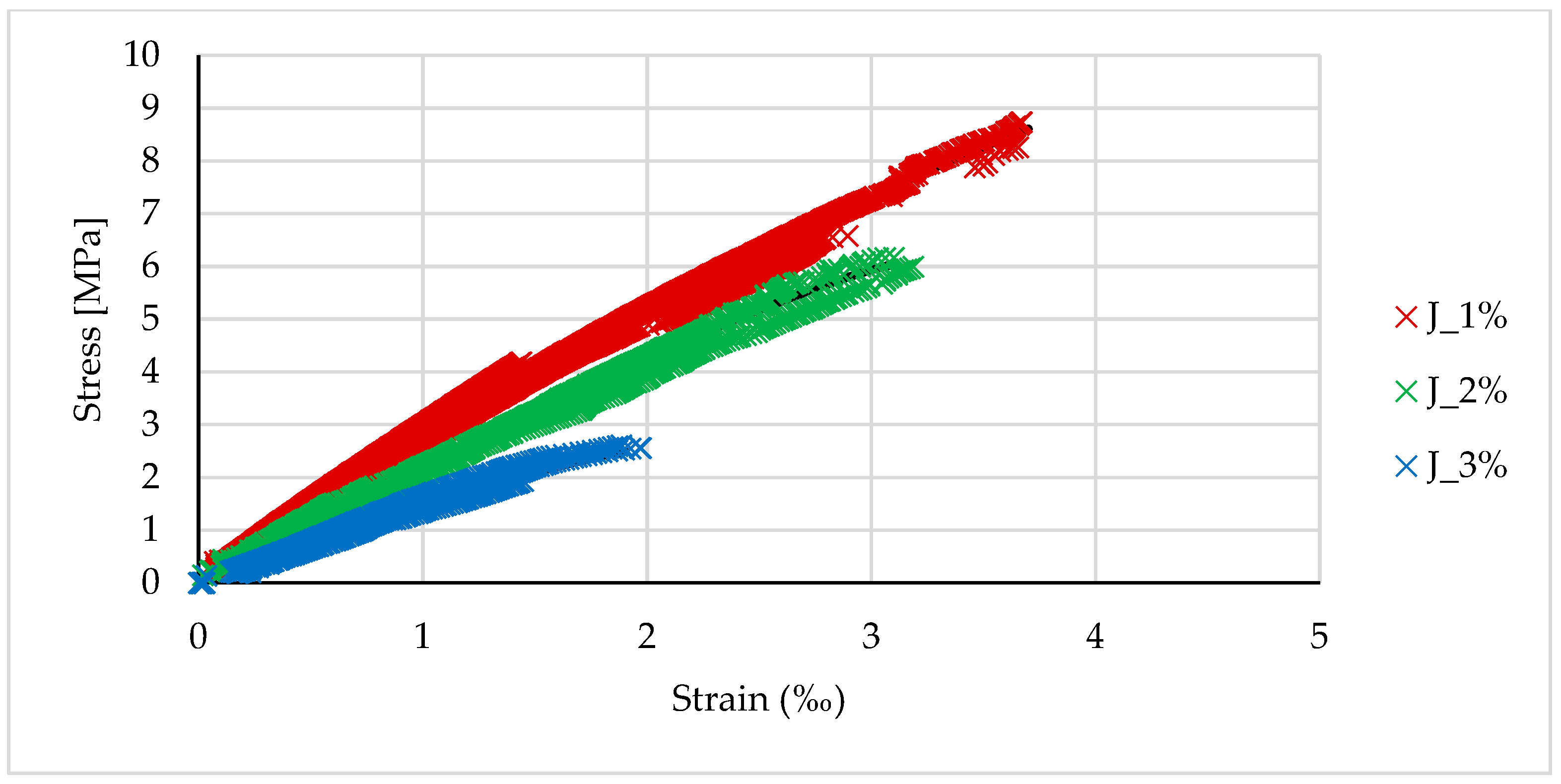

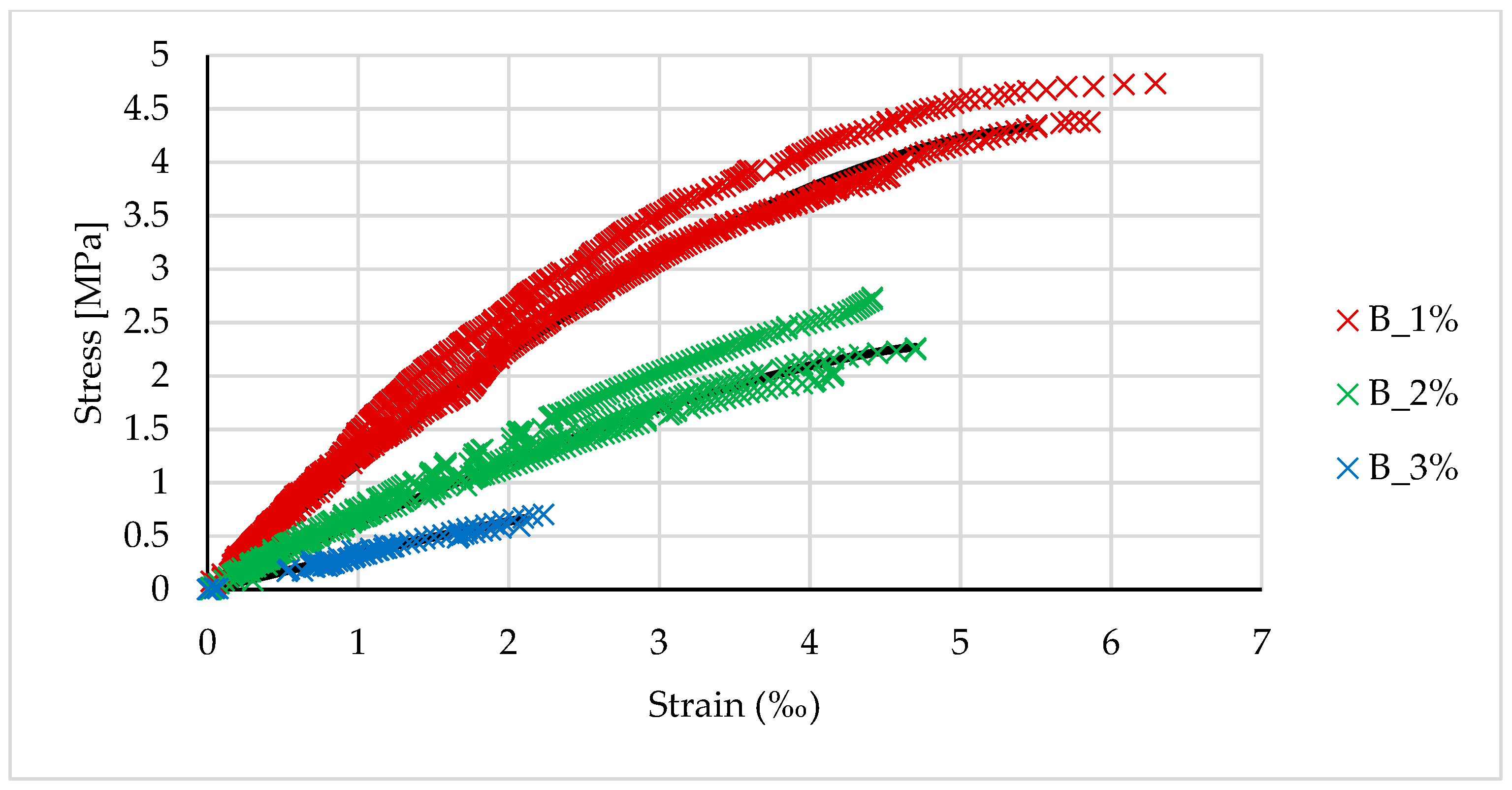
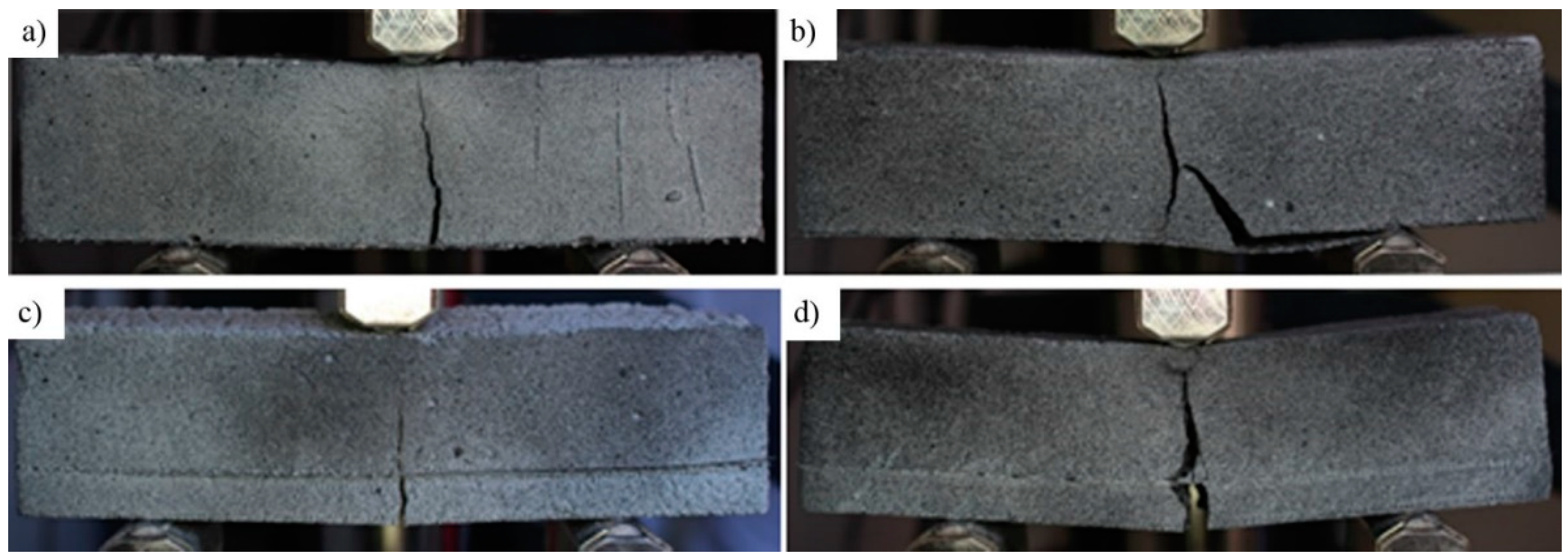

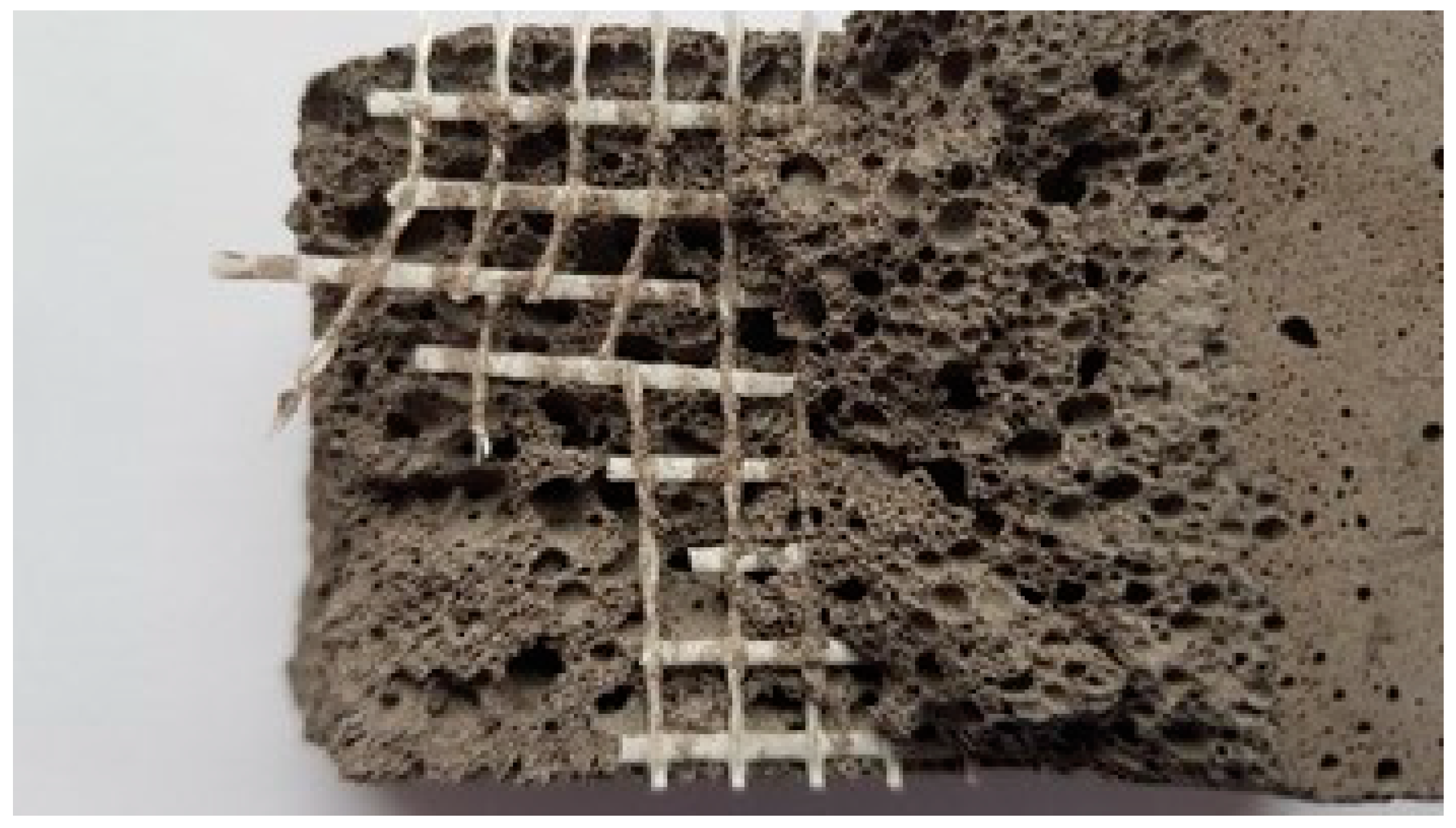
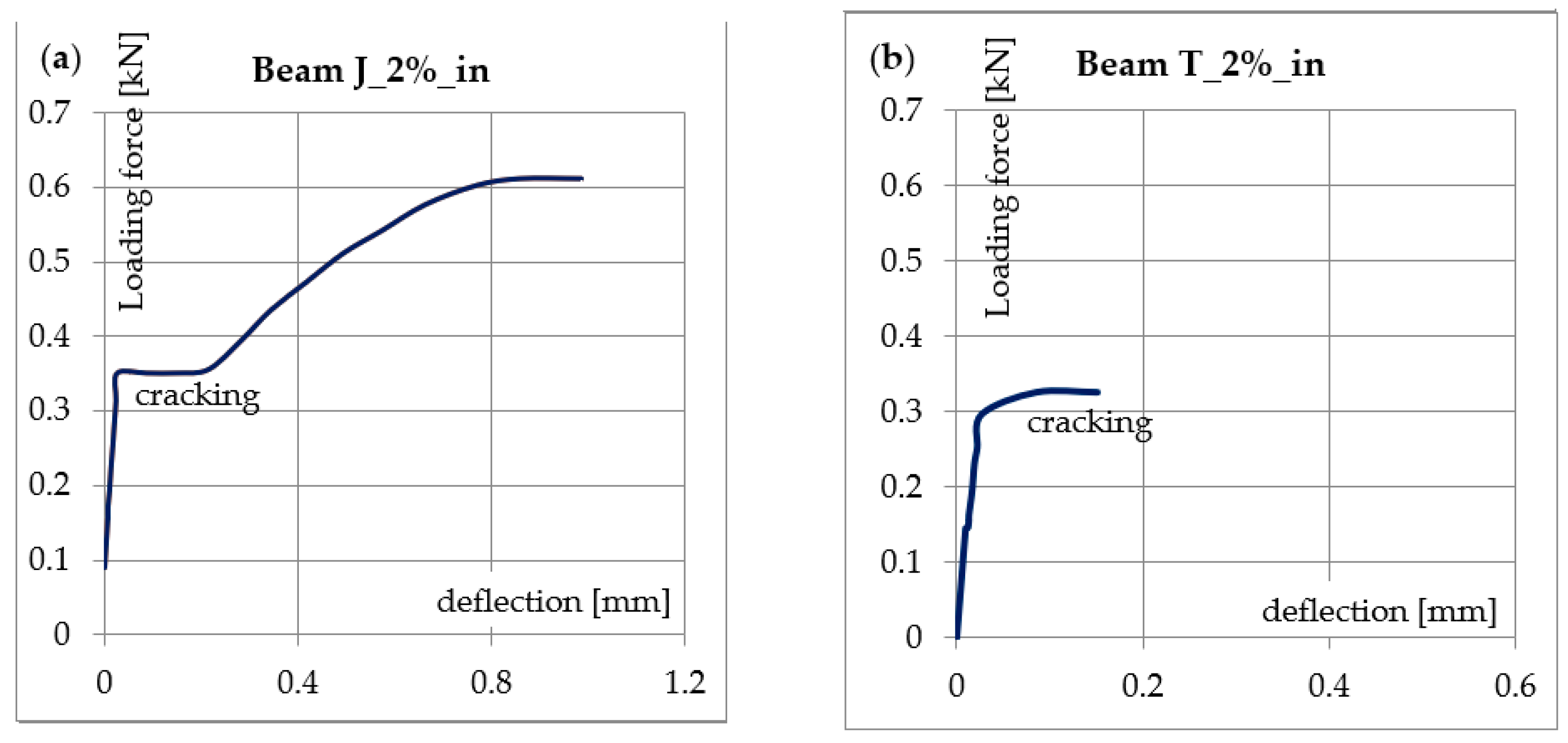
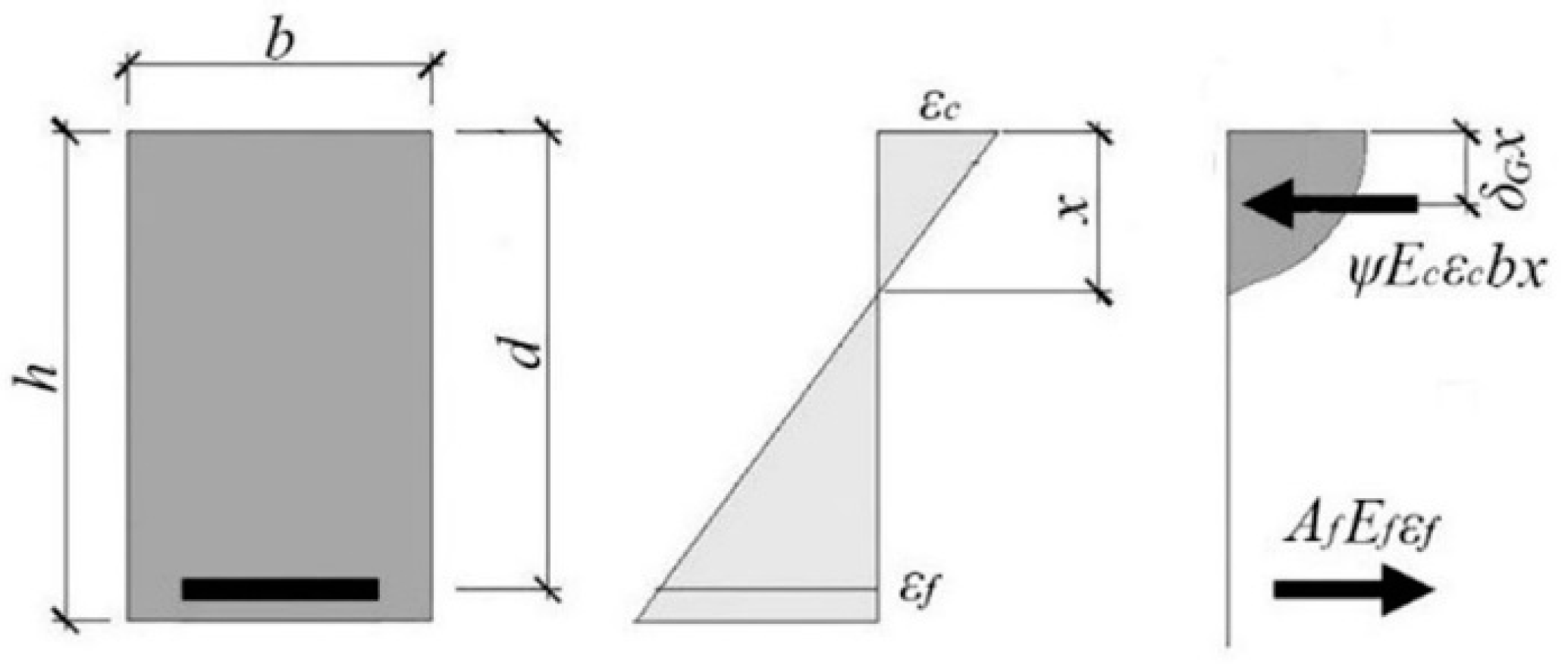
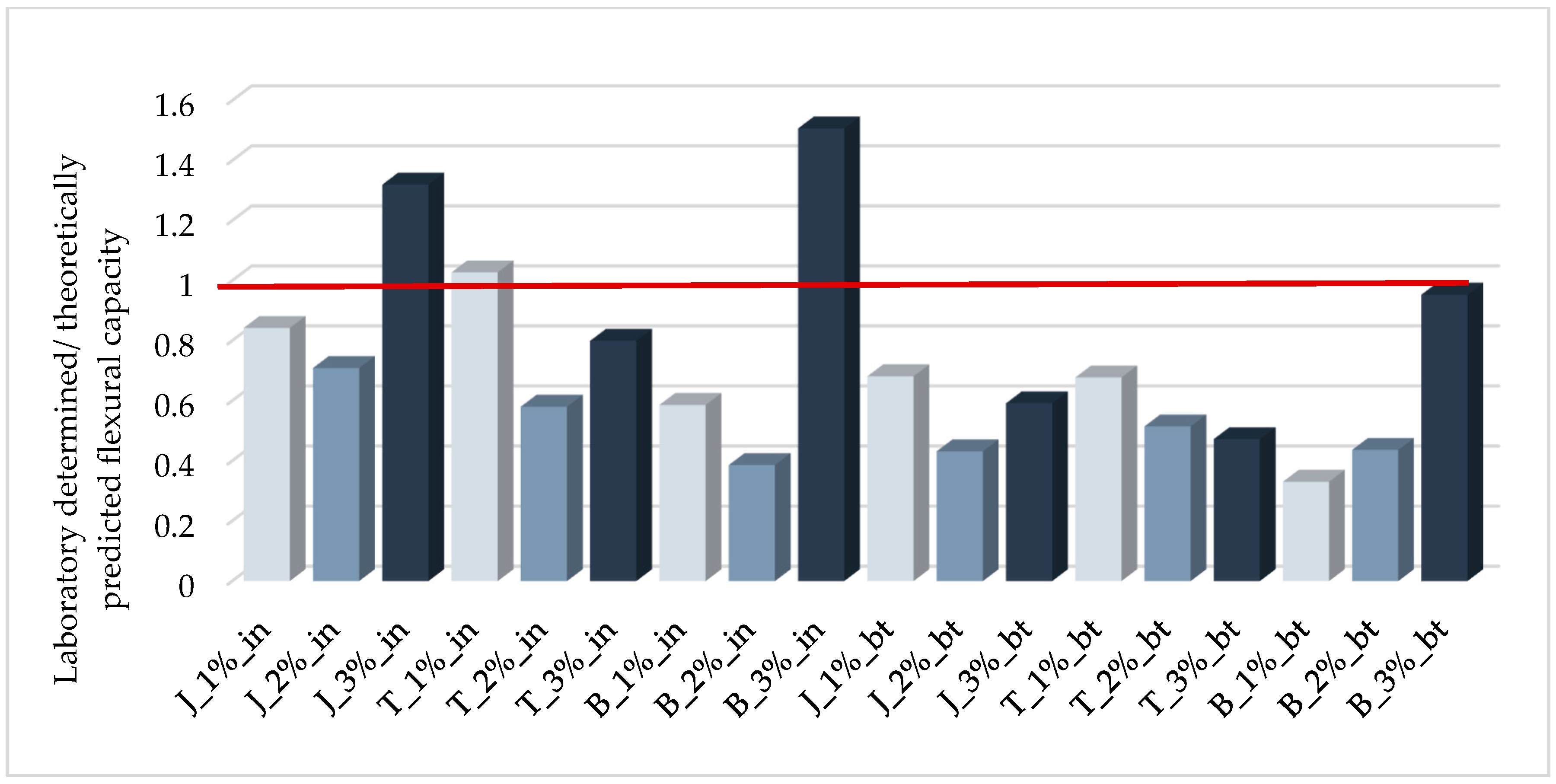
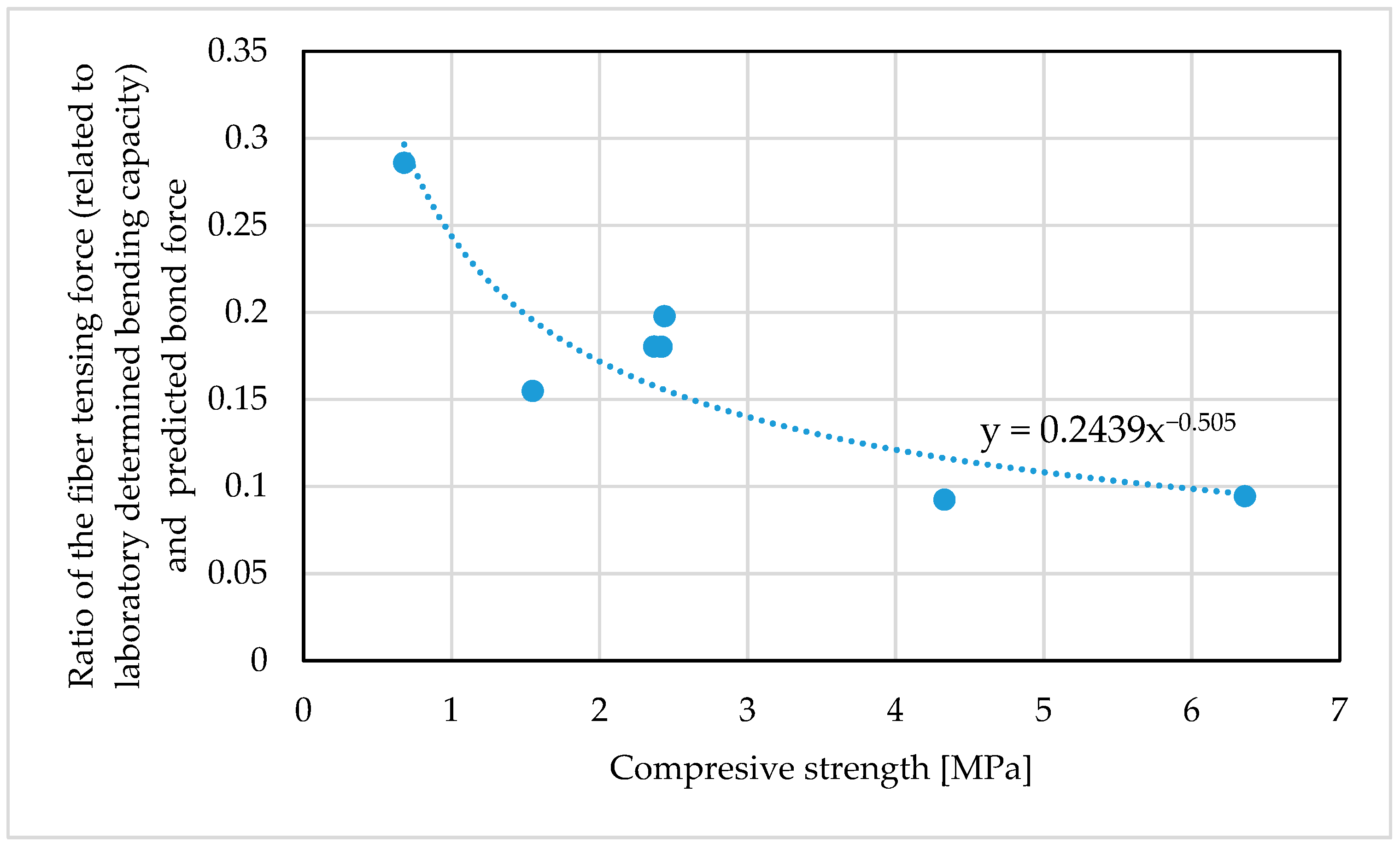

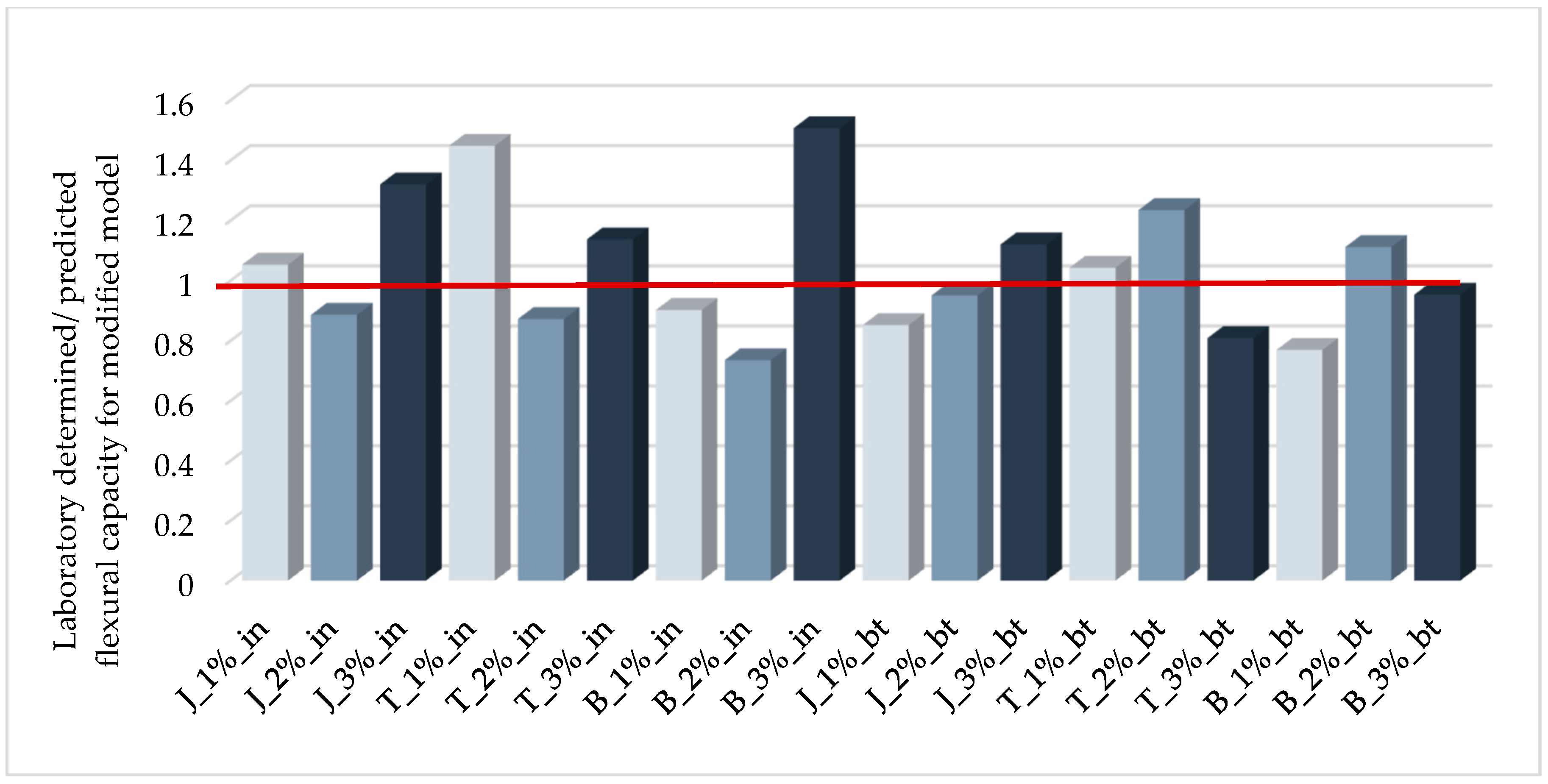
| Power Plant | C | SiO2 | Al2O3 | CaO | SO3 | MgO | Fe3O3 | K2O |
|---|---|---|---|---|---|---|---|---|
| Jaworzno | 6.87 | 45.04 | 30.88 | 8.13 | 0 | 1.86 | 4.29 | 2.1 |
| Belchatow | 9.18 | 16.65 | 11.15 | 21.40 | 35.58 | 1.87 | 4.16 | 0 |
| Turow | 8.73 | 18.15 | 13.30 | 22.27 | 29.25 | 2.79 | 4.33 | 0 |
| Fly Ash Origin | Jaworzno | Belchatow | Turow |
|---|---|---|---|
| Density kg/m3 | 2200 | 2600 | 2740 |
| Mixture | Fly Ash Origin | Fly Ash kg/m3 | Sodium Silicate kg/m3 | Sodium Hydroxide kg/m3 | Hydrogen Peroxide wt % |
|---|---|---|---|---|---|
| J_1% | 540.0 | 270 | 180.0 | 1% | |
| J_2% | Jaworzno | 403.6 | 201.8 | 134.6 | 2% |
| J_3% | 327.8 | 163.9 | 109.3 | 3% | |
| B_1% | 601.6 | 300.8 | 200.1 | 1% | |
| B_2% | Bełchatow | 434.2 | 217.1 | 144.7 | 2% |
| B_3% | 351.3 | 175.6 | 117.1 | 3% | |
| T_1% | 748.4 | 374.2 | 249.5 | 1% | |
| T_2% | Turow | 458.7 | 229.4 | 152.9 | 2% |
| T_3% | 372.5 | 186.3 | 124.2 | 3% |
| Density kN/m3 | Strength MPa | SD | Young Modulus GPa | SD | Poisson’s Ratio | |
|---|---|---|---|---|---|---|
| J_1% | 10.03 | 9.14 | ±0.72 | 2.75 | ±0.14 | 0.18 |
| J_2% | 7.78 | 6.36 | ±0.12 | 1.49 | ±0.12 | 0.19 |
| J_3% | 6.22 | 2.42 | ±0.28 | 1.48 | ±0.14 | 0.18 |
| T_1% | 13.44 | 4.27 | ±1.04 | 0.98 | ±0.036 | 0.18 |
| T_2% | 9.17 | 2.44 | ±0.46 | 0.63 | ±0.037 | 0.19 |
| T_3% | 7.17 | 1.55 | ±0.32 | 0.32 | ±0.052 | 0.19 |
| B_1% | 11.01 | 4.33 | ±0.43 | 1.26 | ±0.16 | 0.18 |
| B_2% | 8.78 | 2.37 | ±0.35 | 0.68 | ±0.053 | 0.18 |
| B_3% | 6.52 | 0.68 | ±0.05 | 0.31 | ±0.024 | 0.17 |
| Strength MPa | Ultimate Strain ‰ | Exponent n | Correlation with Test Results (R2) | |
|---|---|---|---|---|
| J_1% | 9.14 | 3.93 | 1.2 | 0.993 |
| J_2% | 6.36 | 3.14 | 1.2 | 0.994 |
| J_3% | 2.42 | 1.98 | 1.24 | 0.986 |
| T_1% | 4.27 | 3.64 | 1.09 | 0.996 |
| T_2% | 2.44 | 4.12 | 1 | 0.990 |
| T_3% | 1.55 | 3.96 | 0.9 | 0.964 |
| B_1% | 4.33 | 5.56 | 1.6 | 0.985 |
| B_2% | 2.37 | 4.71 | 1.35 | 0.973 |
| B_3% | 0.68 | 2.15 | 1.08 | 0.993 |
| Density kN/m3 | Compressive Strength GPa | Flexural Strength MPa | Ratio Flexural to Compressive | Failure Force (Bending) kN | |
|---|---|---|---|---|---|
| J_1%_no | 9.90 | 8.13 | 1.27 | 0.23 | 0.54 |
| J_2%_no | 7.40 | 3.97 | 0.83 | 0.21 | 0.35 |
| J_3%_no | 6.01 | 1.66 | 0.61 | 0.36 | 0.26 |
| T_1%_no | 13.72 | 5.26 | 1.17 | 0.22 | 0.50 |
| T_2%_no | 8.41 | 2.20 | 0.94 | 0.42 | 0.41 |
| T_3%_no | 6.84 | 1.30 | 0.40 | 0.31 | 0.18 |
| B_1%_no | 11.02 | 4.32 | 0.71 | 0.16 | 0.30 |
| B_2%_no | 7.96 | 2.25 | 0.85 | 0.37 | 0.37 |
| B_3%_no | 6.44 | 0.61 | 0.36 | 0.59 | 0.15 |
| Density kN/m3 | Failure Force kN | Deflection at Failure mm | Failure Mode | |
|---|---|---|---|---|
| J_1%_bt | 9.93 | 0.74 | 0.41 | Rupture |
| J_2%_bt | 7.49 | 0.46 | 0.48 | Rupture/delamination |
| J_3%_bt | 6.64 | 0.47 | 0.51 | Delamination |
| T_1%_bt | 13.38 | 0.71 | 0.14 | Rupture |
| T_2%_bt | 8.42 | 0.50 | 0.36 | Delamination |
| T_3%_bt | 6.26 | 0.28 | 0.27 | Delamination |
| B_1%_bt | 11.02 | 0.35 | 0.23 | Rupture/delamination |
| B_2%_bt | 7.78 | 0.45 | 0.68 | Delamination |
| B_3%_bt | 6.08 | 0.30 | 0.48 | Delamination |
| Density kN/m3 | Failure Force kN | Deflection at Failure mm | Failure Mode | |
|---|---|---|---|---|
| J_1%_in | 10.01 | 0.68 | 0.58 | Rupture |
| J_2%_in | 7.76 | 0.56 | 1.06 | Rupture |
| J_3%_in | 6.45 | 0.66 | 1.18 | Rupture/crushing |
| T_1%_in | 13.64 | 0.73 | 0.52 | Rupture |
| T_2%_in | 9.05 | 0.35 | 0.15 | Rupture |
| T_3%_in | 6.16 | 0.29 | 0.56 | Crushing/rupture |
| B_1%_in | 11.31 | 0.46 | 0.57 | Rupture |
| B_2%_in | 8.15 | 0.28 | 0.60 | Rupture |
| B_3%_in | 6.13 | 0.29 | 0.68 | Crushing/rupture |
| Capacity Reduction Ratio for a Triangular Model | |||
|---|---|---|---|
| J_1% | 0.545 | 0.344 | 0.953 |
| J_2% | 0.545 | 0.344 | 0.952 |
| J_3% | 0.553 | 0.345 | 0.943 |
| T_1% | 0.522 | 0.338 | 0.974 |
| T_2% | 0.500 | 0.333 | 1 |
| T_3% | 0.474 | 0.327 | 1.03 |
| B_1% | 0.615 | 0.361 | 0.887 |
| B_2% | 0.574 | 0.351 | 0.919 |
| B_3% | 0.519 | 0.338 | 0.976 |
| Laboratory Determined Moment Nm | Maximum Bond Length lb,lim mm | Delamination Force kN | Fiber Breaking Force kN | Predicted Failure Moment Nm | |
|---|---|---|---|---|---|
| J_1%_bt | 18.5 | 96.2 | 4.15 | 0.72 | 27.1 |
| J_2%_bt | 11.5 | 105 | 3.30 | 0.72 | 26.6 |
| J_3%_bt | 11.7 | 134 | 1.77 | 0.72 | 19.8 |
| T_1%_bt | 17.7 | 116 | 2.55 | 0.72 | 26.1 |
| T_2%_bt | 12.5 | 134 | 1.77 | 0.72 | 24.2 |
| T_3%_bt | 7.0 | 150 | 1.32 | 0.72 | 14.8 |
| B_1%_bt | 8.75 | 115 | 2.57 | 0.72 | 26.4 |
| B_2%_bt | 11.3 | 134 | 1.75 | 0.72 | 25.7 |
| B_3%_bt | 7.5 | 184 | 0.76 | 0.72 | 7.86 |
| J_1%_in | 17.0 | 0.72 | 20.2 | ||
| J_2%_in | 14.0 | 0.72 | 19.7 | ||
| J_3%_in | 16.5 | 0.72 | 12.5 | ||
| T_1%_in | 18.2 | 0.72 | 17.7 | ||
| T_2%_in | 8.75 | 0.72 | 15.1 | ||
| T_3%_in | 7.25 | 0.72 | 9.06 | ||
| B_1%_in | 11.5 | 0.72 | 19.6 | ||
| B_2%_in | 7.00 | 0.72 | 18.1 | ||
| B_3%_in | 7.25 | 0.72 | 4.81 |
Publisher’s Note: MDPI stays neutral with regard to jurisdictional claims in published maps and institutional affiliations. |
© 2021 by the authors. Licensee MDPI, Basel, Switzerland. This article is an open access article distributed under the terms and conditions of the Creative Commons Attribution (CC BY) license (http://creativecommons.org/licenses/by/4.0/).
Share and Cite
Krzywoń, R.; Dawczyński, S. Strength Parameters of Foamed Geopolymer Reinforced with GFRP Mesh. Materials 2021, 14, 689. https://doi.org/10.3390/ma14030689
Krzywoń R, Dawczyński S. Strength Parameters of Foamed Geopolymer Reinforced with GFRP Mesh. Materials. 2021; 14(3):689. https://doi.org/10.3390/ma14030689
Chicago/Turabian StyleKrzywoń, Rafał, and Szymon Dawczyński. 2021. "Strength Parameters of Foamed Geopolymer Reinforced with GFRP Mesh" Materials 14, no. 3: 689. https://doi.org/10.3390/ma14030689







